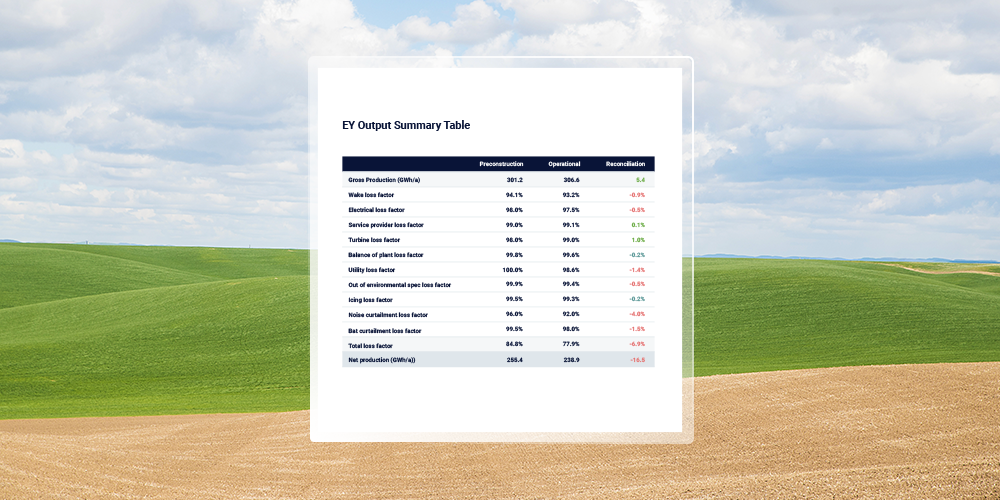For much of my career, prior to cofounding Clir at the start of 2017, I worked as a consultant in the renewable energy industry. As an energy analyst in the wind consulting world, energy yields (also known as EYs or energy assessments) were our bread and butter. Our department head referred to the EY process as a meat grinder. This has stuck in my head because it really rings true.
Consider:
- The input data for an EY comprises millions of data points representing the wind farm’s operational history and meteorological conditions at or near the site.
- This data is run through a series of calculations, i.e. the meat grinder.
- The most important output from an EY is a single number indicating the estimated long-term annual energy production of the farm (net P50). In other words, how many GWh of energy is the wind farm expected to produce per year going forward? Understanding this is key to understanding the performance and value of a wind farm.
As a software company, Clir is keen to increase automation and reduce the amount of human involvement required, with the goal of scaling what we can deliver and our impact on the wind industry. The challenging part of EY process automation is that the analyst is required to make certain decisions during the calculations, within the meat grinder.
The key breakthrough towards increased automation of the EY process was separating the analyst from the meat grinder. A new approach was developed whereby EY results are automatically calculated for all EY scenarios under consideration, of which there are often thousands. Considering thousands of scenarios may be seen as adding complexity. However, these scenarios exist and should be considered regardless of which EY process is used for a given analysis.
Traditional consultants manually calculate some scenarios with different parameters and inputs and then try to judge the best combination. Clir uses software to calculate all possible scenarios — often of which there are thousands — which are then subjected to a sensitivity analysis that can be visualized to find the most representative combination of the farm.
The new process has become Clir’s standard approach and has already been used successfully for multiple farms. Benefits from the new process include:
- Faster delivery of EY results. Analyst time is focused on exercising expertise and judgement rather than running calculations.
- More robust and defensible results, with a wider and more holistic view of possible outcomes and a clearer understanding of the sensitivity of the results to different inputs and assumptions.
- Final results can be compared against certain benchmarks such as the median scenario to gain further confidence in the estimated long-term annual energy production.
Read the full-length blog on Medium


